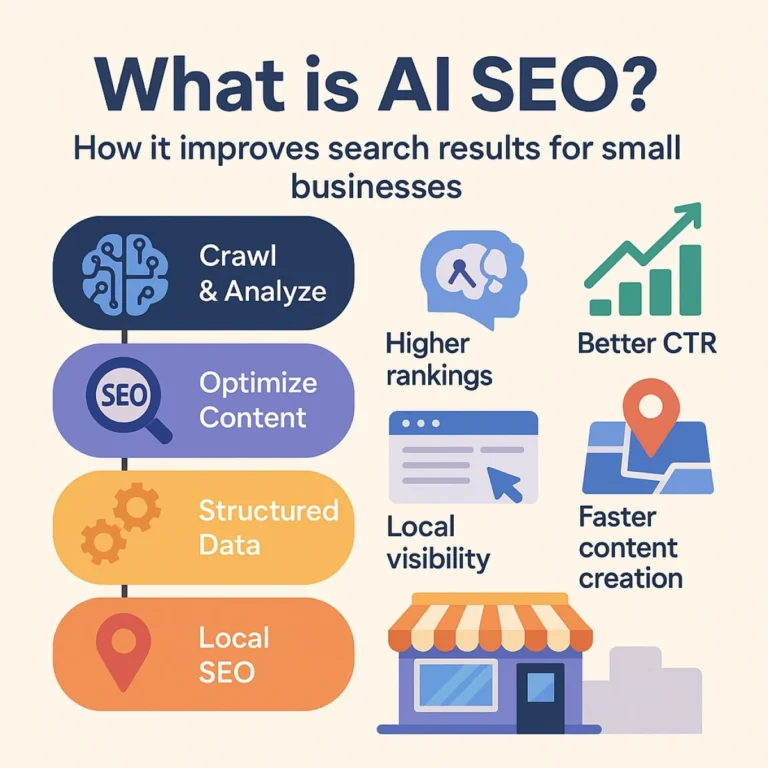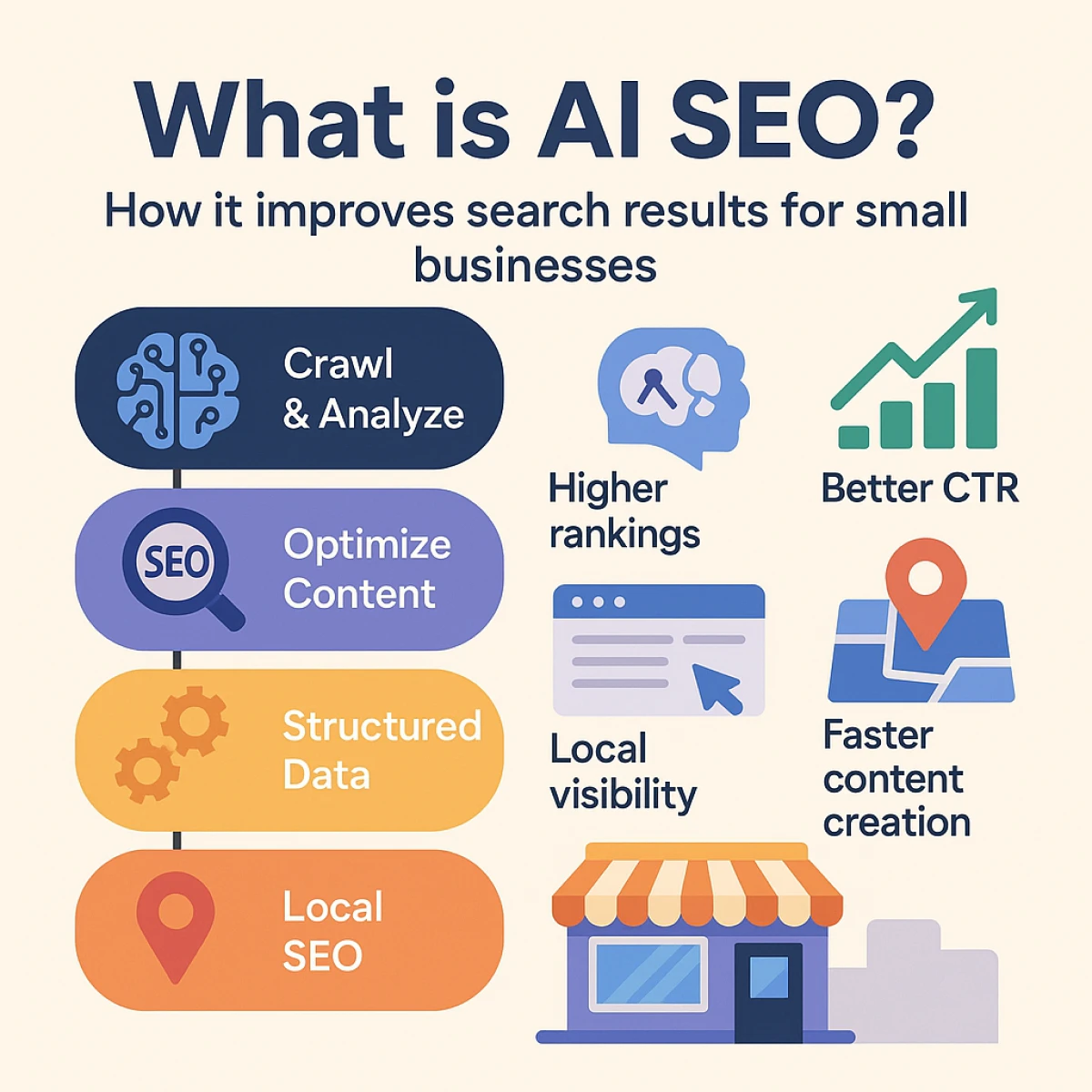Shoppers now get answers, comparisons, and product suggestions directly in the results page. If you want your store to appear there, treat every page as a source of verified facts. Use clear titles, exact specs, consistent variant data, and straightforward policies that match what you show in your feed and on marketplaces. When your data is precise and consistent, AI systems can cite you with confidence.
Back that foundation with proof. Publish reviews with substance, real customer photos, short demo clips, and concise troubleshooting that prevents returns. Add complete schema for Product, Review, FAQ, and Video, and keep price and stock in sync. These same practices strengthen your broader digital marketing because ads, content, and merchandising all point to one version of the truth.
Understand How AI Parses Commerce Content
AI systems look for concrete signals that a page will satisfy a specific buying task. They reward documents that express a clear purpose, provide precise facts, and show independent proof. For e-commerce, that means your product and category pages should read like decision tools. Titles should identify product type and primary benefit. Early paragraphs should answer who the product is for, what problem it solves, and which tradeoffs a buyer should expect. Specifications must be exact and consistent everywhere. Policies for shipping, returns, and warranty should be clear and easy to scan. When information conflicts across your site, your feeds, and your marketplace listings, synthesizers default to safer sources. Consistency creates confidence, and confidence earns citations.
Structure Your Data So Machines Can Trust You
Search engines and AI models rely on structured data to understand a catalog. Treat schema markup as a first-class content layer. Mark up Product with brand, model, price, availability, variant relationships, and rich attributes that matter in your category. Connect Review and AggregateRating to the correct SKUs. Include an FAQ for common objections and compatibility questions. Add VideoObject for short clips that show use in context. Keep this data synchronized with your commerce platform and your feed. When variants drift, images detach, or price and stock lag behind reality, you lose eligibility for shopping modules and AI summaries. A weekly health check that compares storefront pages, schema, and feed entries will prevent most issues before they compound.
Write Pages That Answer Buying Questions Directly
AI promotes content that resolves intent. Instead of broad copy, write category and comparison pages that mirror the language in real queries and reviews. If shoppers ask about size, care, and durability, address those topics with short, declarative paragraphs and concrete examples. Explain the differences among your top products using shared criteria. Define technical terms in plain language and link to a short guide when depth is required. Avoid slogans. Avoid empty superlatives. Show what is true, where it matters, and why it should influence the decision. When a model assembles an answer, it will quote the lines that carry useful meaning without fluff.
Treat Your Product Feed As A Marketing Asset
Your feed powers shopping ads, discovery campaigns, and many AI-driven modules. Craft titles that combine product type, core attribute, and key benefit without stuffing. Populate attributes beyond the minimum, including material, size, color, fit, capacity, and compatibility. Map variants so that reviews roll up correctly and inventory is accurate. Refresh images to cover angles, scale, and lifestyle context. Sync price and stock frequently. A feed that is complete and stable raises quality scores, lowers ad costs, and increases the chance that your items appear inside summaries and product cards.
Align Paid And Organic Around The Same Truth
Automation has shifted paid search toward broad discovery. The way to keep control is to anchor campaigns in the same structured truth you publish on site. Audience signals should reflect customers who actually buy at healthy margins. Creative should echo the benefit statements and proof points from your category pages. Landing pages should greet visitors with the same promise that drew the click, then move quickly into evidence. Brand defense still matters because comparison elements can crowd your name terms. Protect them with simple copy that highlights fast shipping, flexible returns, and trusted reviews. Paid exposure creates momentum while your organic presence earns durable placement inside AI-driven results.
Turn Proof Into A Flywheel
Reviews, photos from real buyers, and short video clips are not cosmetic. They are the strongest third-party signals you can control. Build a post-purchase flow that requests a quick rating, asks a single open question about use, and invites an optional photo. Curate the best submissions into product pages and guides. When a buyer sees their exact scenario reflected in content, conversion increases. When a model sees independent validation next to precise specs and policies, the chance of citation rises. Support content should follow the same pattern. Write troubleshooting sections for fit, setup, safety, and compatibility. Reduce friction before it appears.
Make On-Site Discovery Feel Like The Result Page
The search experience now feels like a guided conversation. Your storefront should mimic that clarity. Improve internal search so it understands synonyms and attributes. Add filters that match the decision criteria you emphasize in content. Introduce a lightweight quiz or finder that captures zero-party data, then explain the recommendation in straightforward language with links to evidence. Consider an AI receptionist that answers presale questions, routes visitors to the right product, and handles routine tasks such as order status and returns. The point is to keep the buyer moving through a single, consistent narrative from search result to checkout.
Measure Lift When Fewer People Click
Last click reporting misses the value of pages that shape a decision earlier in the journey. Use blended customer acquisition cost and contribution margin by cohort to see true efficiency. Run holdout tests for lifecycle messaging and measure incremental revenue. Track assisted conversions to understand how category and comparison content contribute. Pair these with a simple time series model that checks whether spend and sales move together when you change channels or creative. On the qualitative side, watch on-site search terms and support tickets. If repeated questions disappear after a content update, you are moving in the right direction.
A Practical Roadmap You Can Start Today
Pick the category that drives the most profitable orders. Rewrite its category page to answer the top five buyer questions with precise, evidence-based paragraphs. Update the schema to reflect every important attribute and connect reviews cleanly. Fix the associated product pages so that titles, specs, images, and policies match the new narrative. Refresh your feed for those SKUs and align shopping ads with the same language. Ship a simple finder that asks two or three decision questions and returns a clear recommendation. Follow up with a short email sequence that explains how to choose well and use well. When this path converts reliably, repeat it for the next category. Depth before breadth is how you dominate AI surfaces without wasting budget.
Common Mistakes To Avoid
The most common failure is inconsistency. If a size chart changes from page to page or a warranty line contradicts a policy page, trust evaporates. Another mistake is confusing volume with value. Publishing thin articles across dozens of keywords spreads authority too thin. A third mistake is letting feeds decay. Unmapped variants, broken images, and stale prices will quietly remove your items from high-intent placements. Finally, teams often treat reviews as decoration rather than as proof that deserves placement inside the buying narrative.
The Bottom Line
Winning in AI search is not a trick. It is a practice. Make your store the definitive source for the products you sell. Express benefits and tradeoffs in plain language. Keep your structured data and feeds perfectly aligned with reality. Use paid media to amplify the same truths you present to machines and to people. Turn customer proof into the connective tissue that holds the whole system together. If you want experienced support to accelerate this work, consider partnering with a good marketing agency that understands product data, content that earns citations, and conversion-focused merchandising.








